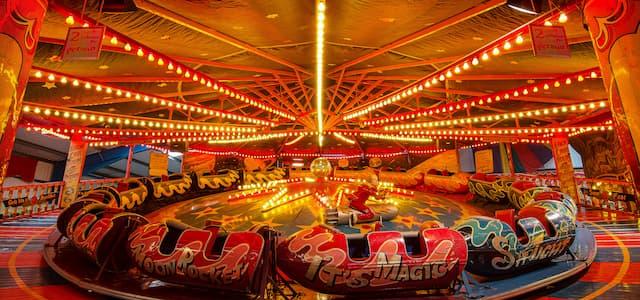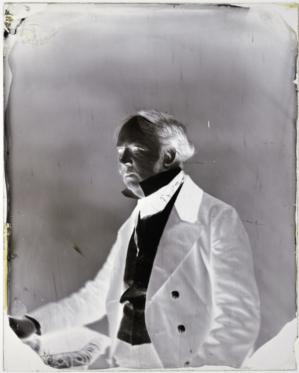
Bodleian secures half the funds needed to acquire the personal archive of William Henry Fox Talbot
Bodleian secures half the funds needed to acquire the personal archive of William Henry Fox Talbot.

The only significant Talbot collection remaining in private hands, this important archive is being sold for £2.2million and the Bodleian Libraries have until the end of February to raise the remaining funds.
William Henry Fox Talbot (1800-1877) was one of the greatest polymaths of the Victorian age, and is most famous today for being the British 'founder of photography'. The archive contains great potential for fuller understanding of the breadth of Talbot's scholarly activities, and of the influences exerted by the women in his family, in particular their educative roles, their shared interests in botany, languages, art, travel and history that are so central to Talbot's work, and their roles as practitioners, supporters, and collectors of the new art.
The collection includes artefacts such as glassware and artworks that Talbot photographed for the ground-breaking publication The Pencil of Nature, the first book illustrated with photographs. There is a strong connection to Oxford, as the archive includes some of the first pictures of the city.
Alongside items related to his pioneering work in photography, the archive also sheds valuable light on his family life, his role managing his estate at Lacock, his life as a Member of Parliament, and his range of intellectual interests from science to ancient languages.
Carole Souter, Chief Executive of NHMF, said: "Considered by many as the 'father of photography', the impact of William Henry Fox Talbot's pioneering work is felt daily by all of us whether we are snapping our holidays with a camera or capturing outings on our mobile phones. This collection offers fascinating new insights into Fox Talbot's family life, particularly the wonderful contribution made by the women of his family; this is why the Trustees of the National Heritage Memorial Fund felt it was so important that the archive should be secured for future generations to explore."
Richard Ovenden, Deputy to Bodley’s Librarian, said: "The archive is an essential resource for scholars on the history of photography, the history of science, and a range of other disciplines. The Bodleian is anxious to ensure that the collection is made available to scholars and to the general public to allow the legacy of this extraordinary innovator and pioneer in photography to continue to inspire new generations of researchers, innovators and photographers."
Hiroshi Sugimoto, one of the world's greatest living photographers, said: "The Bodleian Library at the University of Oxford is seeking to acquire the archive of William Henry Fox Talbot in order to ensure that scholars, artists, photographers and the general public can have access to the mass of papers, sketchbooks, photographs and artefacts that it contains to promote our understanding and appreciation of this great innovator, stimulate new art and other forms of creativity and broaden our understanding of the founder of a field of communication that has changed our world. I would like to add my support to their campaign to secure the Archive of William Henry Fox Talbot."
The Fox Talbot archive includes:
- original manuscripts by Talbot
- family diaries
- family drawing and watercolour albums and sketchbooks, including images made by Talbot's mother, his wife, and by his sister
- correspondence
- early photographic images made by Talbot
- an image made by Talbot's wife, c1839, which may be the earliest image made by a woman
- several hundred photographs received by Talbot - by other photographers from Britain and across the continent, contemporaries of Fox Talbot who shared their images and attempts at early photography
- portraits of Talbot and his family
- materials and artefacts related to the Lacock estate including estate plans, bills etc
- books from Talbot's personal library
- musical scores from Talbot and his immediate family
- scientific instruments from Talbot's own collection
- botanical specimen albums made by Talbot and members of his immediate family.
The significance of the collection for various academic fields is reflected by the variety of well-known names who have lent their support to the Bodleian's fundraising efforts to acquire the Fox Talbot archive:
- two of the world’s greatest photographers Martin Parr and Hiroshi Sugimoto
- scientists: Sir Paul Nurse, President of The Royal Society; Sir Michael Berry, FRS, Melville Wills Professor of Physics (Emeritus), University of Bristol;
- historians: Colin Ford, CBE, Founding Head, National Media Museum; Prof Martin Kemp, FBA former Prof of Art History, University of Oxford
- Michael Pritchard, President of the Royal Photographic Society.
The Bodleian Libraries have until the end of February to raise the remaining funds. A series of public events is planned to support access to the archive, including a major exhibition in 2017. Highlights from the archive will also feature in the opening exhibition for the Weston Library, and in a number of smaller displays.
Notes to editors
About William Henry Fox Talbot
William Henry Fox Talbot (1800–1877) was a British humanist, scientist and inventor, best known for his invention of photography. His 1839 announcement of the negative, which could produce multiple prints on paper, defined the central path for photography right down to the digital age. He became the first artist to be trained by photography. Talbot also made significant contributions to fields as diverse as Assyriology, astronomy, botany, electricity, etymology, mathematics, optics and politics. As a scientist, Talbot blended 18th-century traditions of the amateur with 19th-century concepts of progress and professionalisation. He was a Fellow of the Astronomical, Linnaean, and Royal Societies; the latter gave him two gold medals, one for the invention of photography and one for mathematics. Talbot came from a family with strong diplomatic, social and royal connections and sat briefly as a Whig (reform) Member of Parliament. He sensitively guided his estate of Lacock Abbey in Wiltshire through the perils of the social uprisings in the 1830s and the expansion of the railways in the 1840s. Talbot published eight books and more than a hundred journal articles and was granted twelve patents. He was awarded an honorary Doctorate from Edinburgh University. Although personally shy, Henry Talbot was a brilliant figure who lived within a sphere of substantial influence.
About the Bodleian Libraries
The Bodleian Libraries of the University of Oxford form the largest university library system in the United Kingdom. They include the principal University library - the Bodleian Library - which has been a library of legal deposit for 400 years; major research libraries; and libraries attached to faculties, departments and other institutions of the University. The combined library collections number more than 11 million printed items, in addition to 50,000 e-journals and vast quantities of materials in other formats. Bodleian Library website.
Further information
Bodleian Libraries: Oana Romocea, Communications on 01865 277 627, email: oana.romocea@bodleian.ox.ac.uk.

